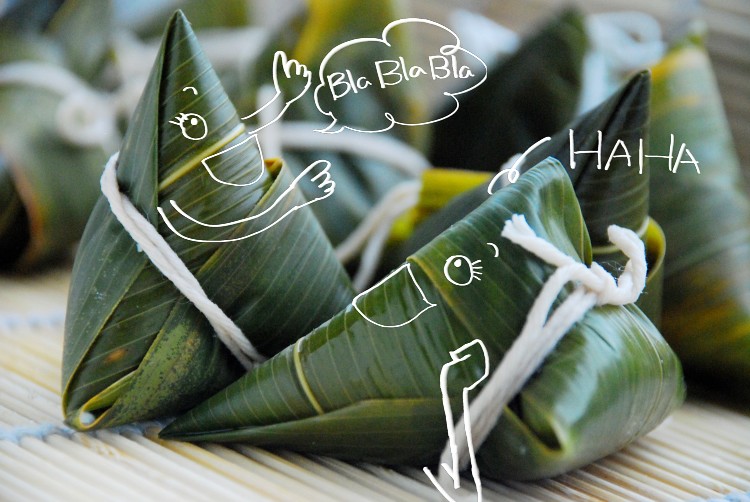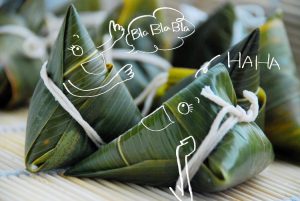Savoring in the North Tendering in the South

Savoring in the North Tendering in the South
The way I recognize a place is a way I savor their food. To me, food is not just an edible thing, which is evolved from local custom and cultural preference by challenges of time. It represents the very special story of the place.
In Taiwan, it is interesting that we can enjoy the same kind of tasty food with different culinary skill. For instance, in southern Taiwan, the dumplings are made of raw rice with fried ingredients and boil in a pot of hot water until they have reached a taste of velvet smoothness, which is considered to be the primary excellence in most of the southern culinary select- tender sweetness. However, in northern Taiwan, the dumplings we deal with are to fry all the material in advance and then to steam the composition until they have released all kinds of aroma. To sustain an original chewy taste of each ingredient and to create a complex color, it is viewed as the highest aesthetic in the North.
A native Tainan friend has told me, the very first bite of northern dumpling once gave him a shock. He was astonished by the surprising salty, and the rich scent of the bamboo leaves. I enjoy having this endless feast with all my friends from different parts of Taiwan. I guess this is my luck to have the opportunity to embrace different culinary styles on one island. My friend from the south showed me a harmonious combination of thickening the food with flour and sugar, I think the taste of it echos the brightness of southern sunshine- warm and thick. Taipei, on the contrary, is distinct and diversified with multiple cultural cuisines. I will say no matter how life-changing, a memory of flavor is an embedded ID which carries the nostalgia of our home. The true treasure that always with us.

Photo credit: adacao on Visualhunt.com / CC BY-NC-SA
我認識一個地方,往往藉由品嘗當地的食物。 對我來說食物不僅扮演可食的功能,他更蘊含了隨著時間的更迭,當地的文化風情與迷人故事的典藏。
在台灣,這是個有趣的現象,一樣食物南北作法大不同。 舉例來說,南方粽是由生米加上炒過的配料,包上粽葉後,放進大鍋水煮而食。它的特點是甜滑軟糯,這也是大部分南部飲食的美味標準,食物裡的那一抹甜是關鍵。然而,北部粽則是由各種事先拌炒過的材料混和而成,裹上粽葉後,再清蒸而食,目的是保持每個原料原本的口感,同時增加調配食材後所創造的獨特香氣。這也是台灣北部食物的綜和特色-香氣與口感。
一個台南的友人曾對我說,第一次嘗到北部粽,他被粽子裡濃重的葉香與混雜的鹹味驚呆了。而我自己則是很喜歡這樣永無止盡的探索台灣各處食物的特點。我猜這是我的幸運,可以同時擁有多種飲食文化的體驗在一個島嶼上。來自南部的朋友向我展示了南部飲食文化中"勾芡"這種甜中帶糯的獨到口感,而這種巧妙的融合,像極了南台灣的陽光,明亮厚實而溫暖。而台北,我的家鄉,則是一個顯著多變的複合飲食場域。我想無論身在何地,每個遊子身體裡存在對食物的記憶就是一個行動的鄉愁,更是一個行走的寶藏,一個在我們的身體裡的隱形身分。
撰文
Chuck Chang
文章修訂改寫
Lily Wang
說故事的人英語工作室
老師對文章評論解析
美食是聯繫文化傳承與生活美學的結晶, 對食物的依戀,形塑了我們的生活軌跡。食物是一種很生活的觀察,美食從來沒有高低,只有欣賞的趣味。中華美食的博大精深,以及人對於食物的那種依戀與習慣,組構成一篇有趣的主題,交朋友從分享自己地方的美食開始。世界從來就是不同的,但熱愛食物與家鄉的心,大家都是相同的。用好的英語表達自己家鄉文化,傳遞給外國友人屬於我們文化的特色美學。